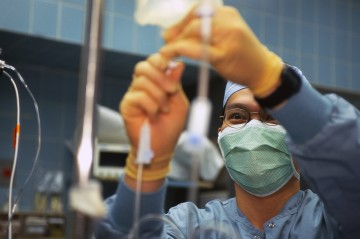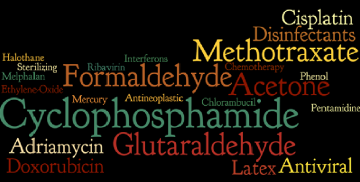 Phase 1 – assessment of chemical exposure hazards encountered by health care workers in BC
Phase 1 – assessment of chemical exposure hazards encountered by health care workers in BC
- Healthcare workers (HCWs) encounter many different chemical agents in their work environment, some of which are known to be a risk for cancer, asthma, dermatitis and other diseases.
- Exposures to chemicals occur through diagnostic and therapeutic procedures, cleaning, sterilization procedures, and laboratory analysis as well as through housekeeping, laundry and maintenance related activities.
- Workers can be exposed through direct handling, cross-contamination of areas due to poor ventilation design, transport of waste, or the cleaning of equipment or rooms.
Objectives:
- To link information from existing sources to create a risk assessment / risk management (RA/RM) software tool to assess HCWs risks and recommend strategies to control or eliminate those risks.
- The tool will be available primarily for occupational health and safety professionals, managers, researchers and for HCW.
- The initial focus of the tool (Phase 1) will be on the exposure of nurses to 5 chemicals that are commonly used in hospitals: acetone, formaldehyde, glutaraldehyde, cyclophosphamide, and methotrexate. In subsequent phases, the tool will be expanded to include all major chemical, biological and physical exposures for all HCWs.

Methods:
- Existing chemical exposure data will be obtained directly or through sharing agreements from the Health Authorities and other available organizations.
- Exposure information by specific department and task will be canvassed by job shadowing experienced nurses in different departments.
- The risk of exposure will be evaluated and ways to reduce/mitigate the risk will be defined. Methods in controlling chemical exposure currently in place will be obtained from the Health Authorities and ‘OHS Connects’, combined with potential controls from the scientific literature.
- The research team will engage with Health Authority stakeholders in order to develop a strategy to incorporate the RA/RM into existing software platforms such as the WHITE surveillance database, so that the tool will be immediately familiar to end users.
Intended Research Outcomes:
- Initial RA/RM tool development will capture nurses’ exposures to five commonly used chemicals in healthcare – identifying who’s at risk and where controls are needed.
- The RA/RM tool will provide decision makers in healthcare with leading indicators based on an assessment of risks common to the healthcare environment to support their strategies to prevent work-related illness and injuries.
- By identifying the current exposures and health risks associated with chemical hazards found in healthcare, the rate of over exposure and number of claims due to exposure can be reduced.